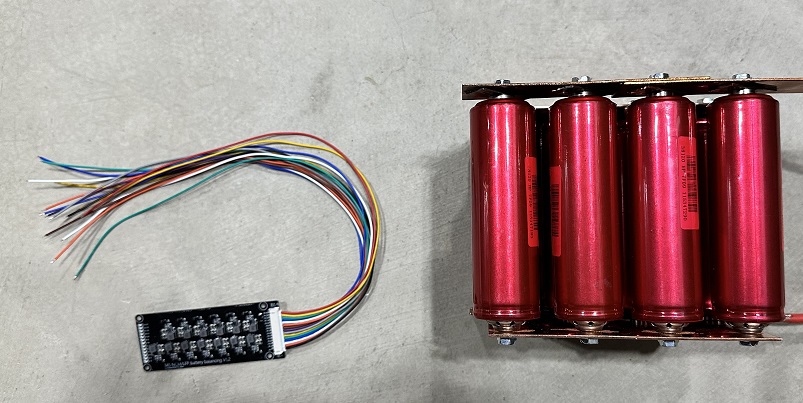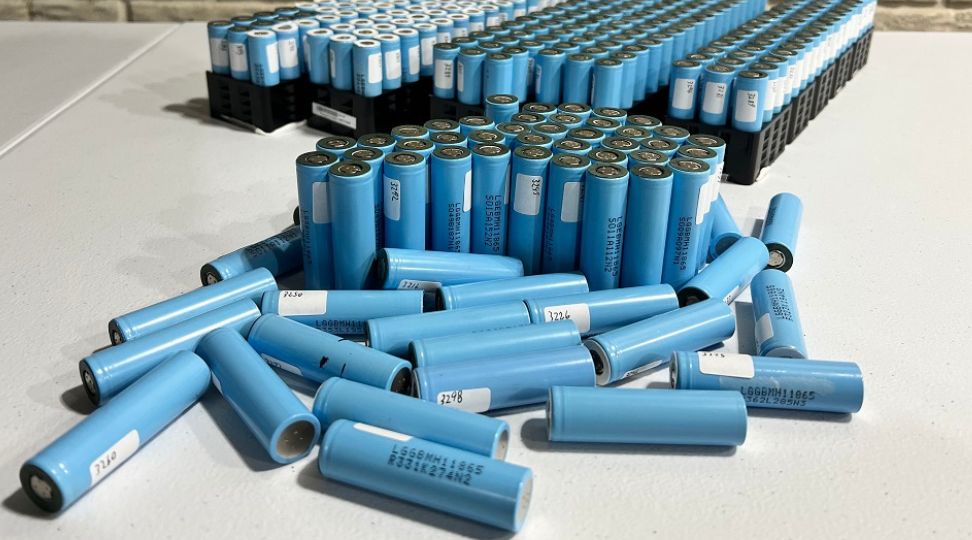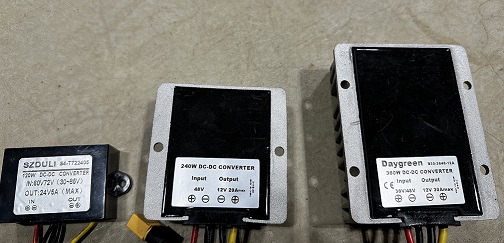
Difference Between Active And Passive Battery Balancers
Table of Contents
Balancing lithium-ion batteries is crucial for ensuring the safe, efficient, and long-lasting operation of the battery pack. In a lithium-ion battery pack, individual cells are connected in series to increase the voltage and overall energy storage capacity. However, due to manufacturing variations and the inherent characteristics of lithium-ion cells, the cells in a pack can become imbalanced in terms of their state of charge.
This can lead to a number of problems, such as reduced overall performance and capacity, increased risk of thermal runaway, and reduced overall life of the battery pack. Balancing the battery pack ensures that each cell in a battery pack is at the same state of charge, which helps to mitigate these issues and ensure safe and efficient operation.
Active balancing redistributes charge among the cells in a battery pack to ensure that they all have the same state of charge with a dedicated circuit, which monitors the voltage of each cell and adjusts the charging and discharging current accordingly. Active balancing is more accurate and faster than passive balancing. On the other hand, passive balancing relies on Ohm’s Law and the natural cell and balance resistor characteristics to bring cells to the same state of charge. Passive balancing is generally less accurate and slower than active balancing and may take longer to achieve the desired result.
In this article, we will explain the difference between active and passive balancers, and we will elaborate on how lithium-ion batteries work, why lithium batteries need to be balanced, and the pros and cons of active or passive balancing.
What’s The Difference Between Active And Passive Balancers?
Active balancing refers to the process of actively redistributing charge among the cells in a lithium-ion battery pack to ensure that they all have the same state of charge. This is typically done using a dedicated circuit in addition to BMS (battery management system), which has the capability of transferring energy from one cell group to the other. Active balancing can be performed in real-time and is typically more accurate and faster than passive balancing.
Passive balancing, on the other hand, relies on the natural discharge rate of the cells to bring them to the same state of charge. This is achieved by simply placing a small load on the cell or cell group. Passive balancing is generally less accurate and slower than active balancing and may take longer to achieve the desired result.
Both methods have the advantage of maintaining the cells in a battery pack at an equal state of charge, but active balancing does that much more effectively. This extends the overall life of the battery pack. It also allows for a higher state of charge and discharge rate, which can be beneficial in applications where high power is required.
Passive balancing, on the other hand, is simpler and less expensive to implement, as it does not require any additional circuitry other than the always-required BMS.
The most important thing to remember is that active balancing is more accurate and efficient but requires a dedicated BMS, while passive balancing is simpler and less expensive but less accurate. Both methods have their pros and cons and the choice between them will depend on the specific application and requirements.
What Is Balance Current?
Balance current is the measure of how fast an active or passive balancer can balance. It is the current that is used by a battery management system (BMS) to redistribute charge among the cells in a battery pack, as part of the active balancing process. The balance current is typically a small fraction of the overall charging or discharging current of the battery pack, and is used to adjust the state of charge of cells that are out of balance with the other cells in the pack.
The balance current is determined by the BMS or external balancer based on the voltage and state of charge of each individual cell. The current is used to adjust the cell voltages in real-time to ensure that all the cells in the pack are at the same state of charge. Balance current can be positive or negative depending on whether the current is flowing into or out of the cell in question.
In summary, balance current is the current used to ensure that all the cells in a lithium-ion battery pack have the same state of charge.
What Happens When Cells Become Unbalanced?
When cell groups in a lithium-ion battery pack become imbalanced, the overall performance and capacity of the pack is reduced and the risk of thermal runaway and reduced overall life of the battery pack increases.
For example, let's say you are building a battery pack that has 10 cells connected in series, and the target state of charge for each cell is 4.0V. So, you charge that battery to 40 volts. Unknown to you, however, one of the cell groups has a slightly lower voltage of 3.8V. If you have a charge voltage of 40V and one of the cell groups is at 3.8V, then that leaves 36.2 volts to be split up between the remaining 9 cell groups. This means that the other cells are being charged to 4.02V instead of 4.0V. That's how a drastically lower cell group can cause the other cells to get overcharged.
In this scenario, you can see how the undamaged cells can be given a voltage that is disproportionate to the battery pack's state of charge. As the battery is depleted, the low cell group will reach LVC (Low Voltage Cutoff) first, causing the BMS to shut down the battery even though there is still plenty of energy left in the other 9 cell groups.
Active Balancing vs Passive Balancing, Which Is Best?
Active Balancing
Active balancing is best suited for high-power applications where high accuracy and fast response times are crucial. Some examples of use cases where active balancing would be best include:
- Electric Vehicles: In electric vehicles, the battery pack is subjected to a wide range of temperatures, high currents, and frequent charge and discharge cycles. So, it's best to have active balancing in electric vehicles so that energy can be distributed where it's needed as quickly as possible.
- Home Energy Storage Systems: In powerwall systems, the battery pack is used to store energy from renewable sources and to provide backup power during power outages. Active balancing is best for this application because it provides the longest possible run time for a battery, which could be critical if you are depending on a battery to power your home.
- High Current Applications: Active balancing is best for high current applications because active balancing has a much quicker and much more efficient way of balancing cells compared to passive balancing. This is ideal for applications that place a large load on the cells.
Active balancing helps to ensure that the cells in the pack are all at the same state of charge by actively transferring energy from high cells to low cells. This drastically extends the life of the battery pack and improves performance by a significant margin.
Passive Balancing
When it comes to balancing methods, it's important to consider the specific requirements of your application. Either active or passive balancing could be suitable, depending on the accuracy, speed, cost, and safety needs of your project.
Sure, passive balancing is the more simple solution, but it’s still an extremely effective way of keeping all the cells in the pack at the same state of charge. This can be true even in areas that are usually dominated by active balancing.
For example, electric vehicles often require high accuracy and fast response times, but passive balancing can still be used in many applications, here are a few:
- Low-power electric vehicles: For low-power electric vehicles, such as e-bike batteries, scooters, and personal mobility devices, the battery pack is not subjected to the same high currents and temperatures as in high-power electric vehicles. In such cases, passive balancing could be sufficient for maintaining the balance of the cells in the pack.
- Second-life batteries: When used batteries from salvaged battery packs, after their first life as energy storage, are used in less demanding applications, passive balancing could be an option.
- Cost-sensitive applications: Passive balancing is generally less expensive to implement than active balancing, therefore if cost is a major concern, passive balancing could be a viable option in electric vehicle applications.
It's important to keep in mind that in general, electric vehicles require high accuracy and fast response times to ensure the safety and performance of the battery pack. Therefore, passive balancing may not be the best choice in most electric vehicle applications, but in some specific use cases, it could be a viable option.
Conclusion
Balancing is one of the most important aspects of lithium-ion batteries. This is because lithium-ion battery packs contain multiple groups of cells in parallel and series. The parallel cells are able to transfer energy between each other and maintain a self-balance, but the series cells cannot do this.
This is why some sort of external balancing circuit is required. In an ideal scenario, you would not have to worry about balance because the cells are all the same anyway. In reality, however, variations in the manufacturing process and other factors will make even batteries with perfectly matched cells eventually come out of balance.
Active balancing is able to redistribute energy between the series groups of a battery pack to ensure that they all have the same state of charge. This is done with a sophisticated circuit that is able to connect to the higher voltage cell group, take the excess energy from it, connect to a lower voltage cell group, and then transfer the stored energy to them to bring them into balance. Because of this, active balancing is the more accurate and faster approach to battery balancing.
In contrast, passive balancing relies on Ohm’s Law and the natural cell and balance resistor characteristics to bring cells to the same state of charge. This method works by literally burning off the excess energy in the higher voltage cell groups, which is wasteful. Because of this, passive balancing is generally less accurate and slower than active balancing and in cases where the cell groups are significantly imbalanced, the low and slow passive balance current may be totally unable to bring the battery to balance.
We hope this article helped you learn everything you needed to know about the difference between active and passive balancers. Thanks for reading!




